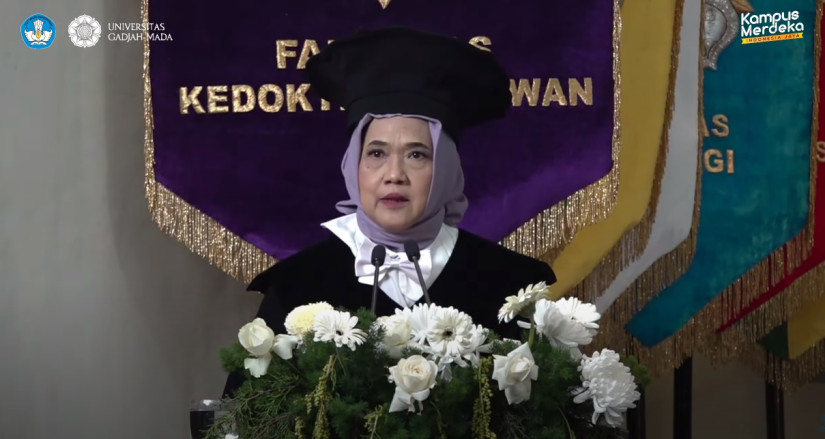
Infectious bovine rhinotracheitis (IBR) stands as a formidable threat to the flourishing cattle farms in Indonesia.
This highly contagious animal disease, affecting the upper respiratory system in cattle, not only triggers a decline in productivity but also gives rise to reproductive complications and virus latency-reactivation, culminating in substantial economic losses and societal repercussions.
Addressing the escalating incidence of IBR in Indonesia, Professor Tri Untari conveyed the urgency of implementing preventive measures and devising effective strategies to curb the disease’s proliferation.
Her remarks came during her inauguration as a professor in microbiology at the UGM Faculty of Veterinary Medicine on Tuesday (Dec. 12) at the UGM Senate Hall.
Under the banner of her inaugural speech titled “Problems of Infectious Bovine Rhinotracheitis Disease in Cattle in Indonesia,” Professor Untari underscored the pivotal role of early detection in disease control and interrupting transmission, emphasizing the need for a comprehensive approach from the source to downstream.
“To prevent the spread of IBR, routine monitoring of centers producing semen for breeding stock is imperative,” she stressed.
Professor Untari advocated for the steadfast implementation of the IBR eradication program. Additionally, she emphasized the need for an augmented role of quarantine, especially in fortifying its detection capabilities concerning imported cattle.
Highlighting another crucial aspect, she recommended adopting the Differentiating Infected from Vaccinated Animal (DIVA) marker vaccine. This approach ensures a clear distinction between infected and vaccinated cattle, facilitating better control and eradication efforts.
European countries have successfully employed DIVA vaccines, employing ELISA serological tests to distinguish between antibodies from vaccination and those resulting from field infections.
However, despite the benefits, Indonesia has yet to embrace DIVA vaccines for various reasons.
“A veterinary economic analysis should accompany the deployment of these vaccines to calculate the benefits and losses comprehensively,” she emphasized.
Author: Ika

